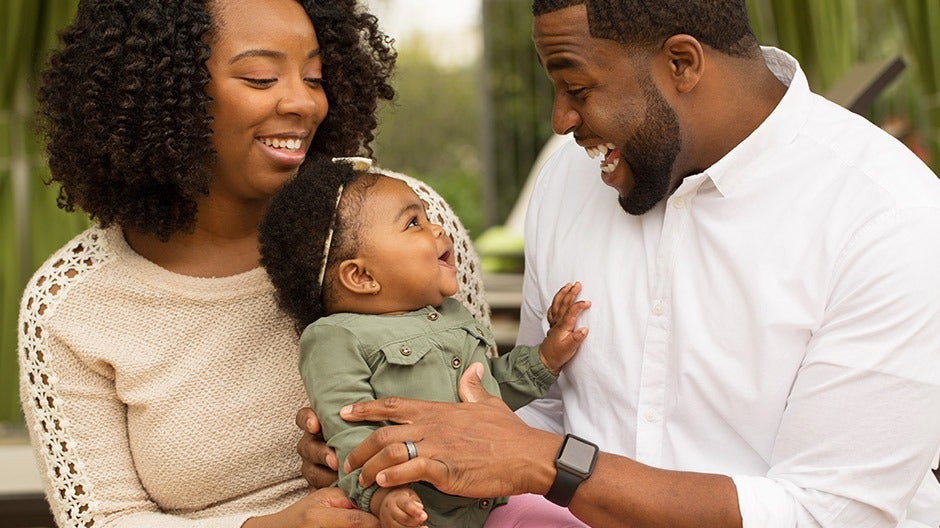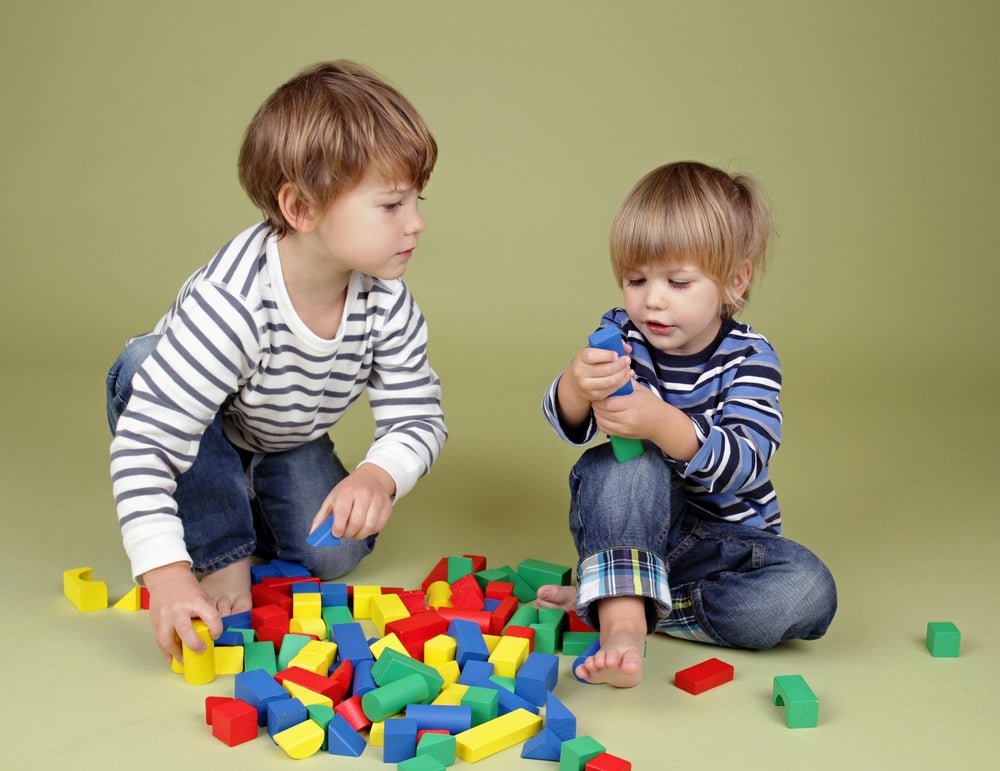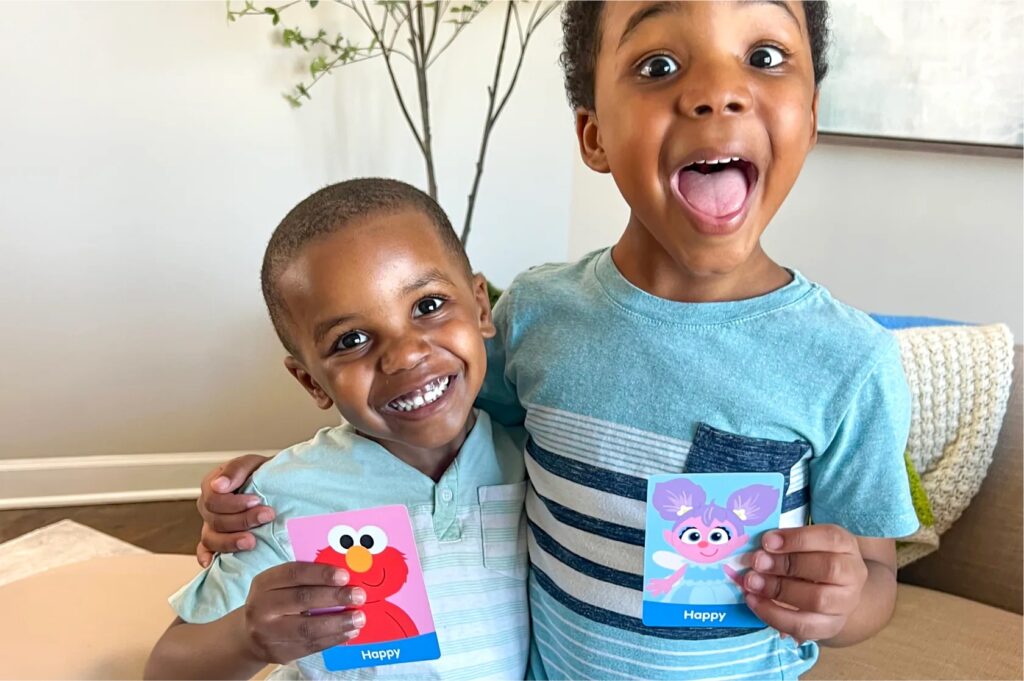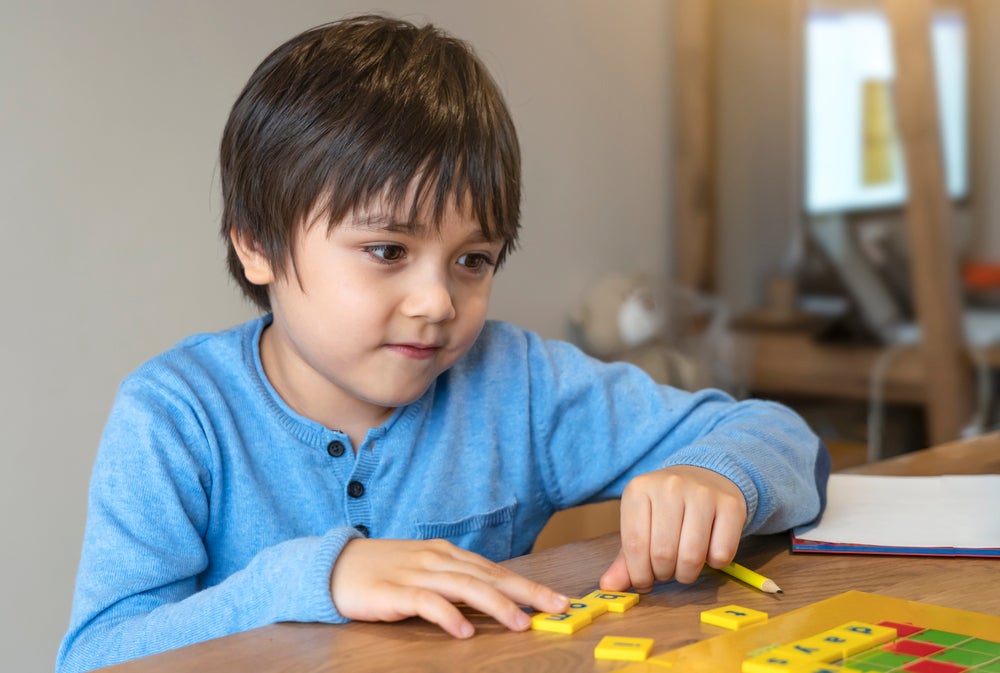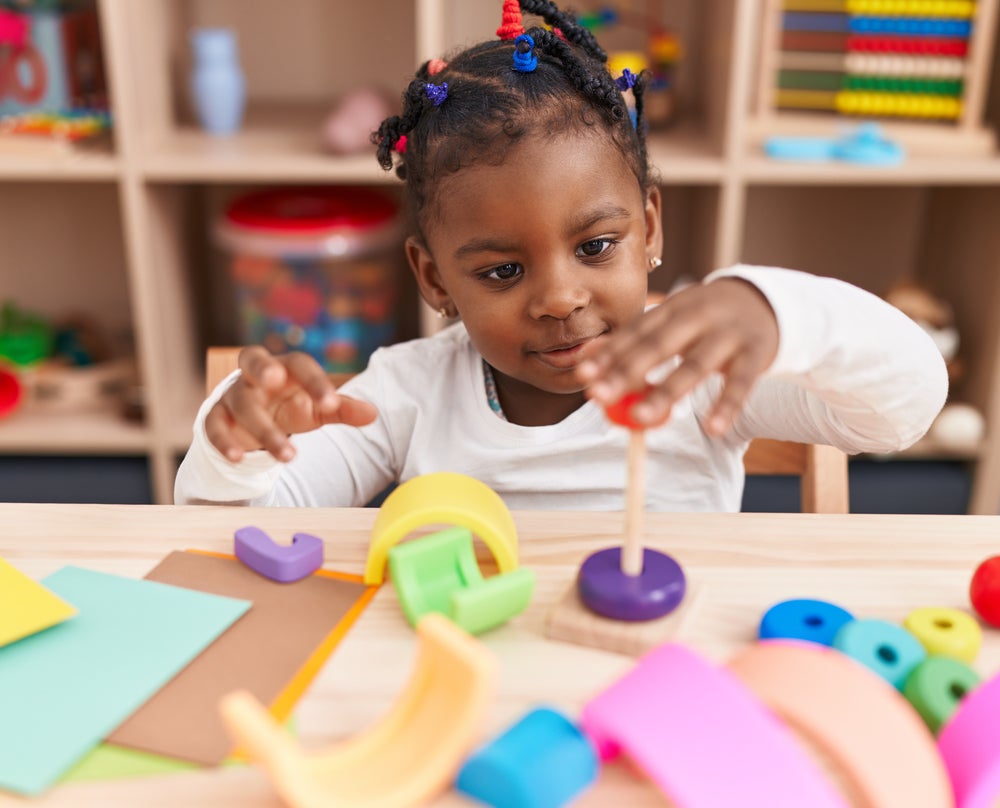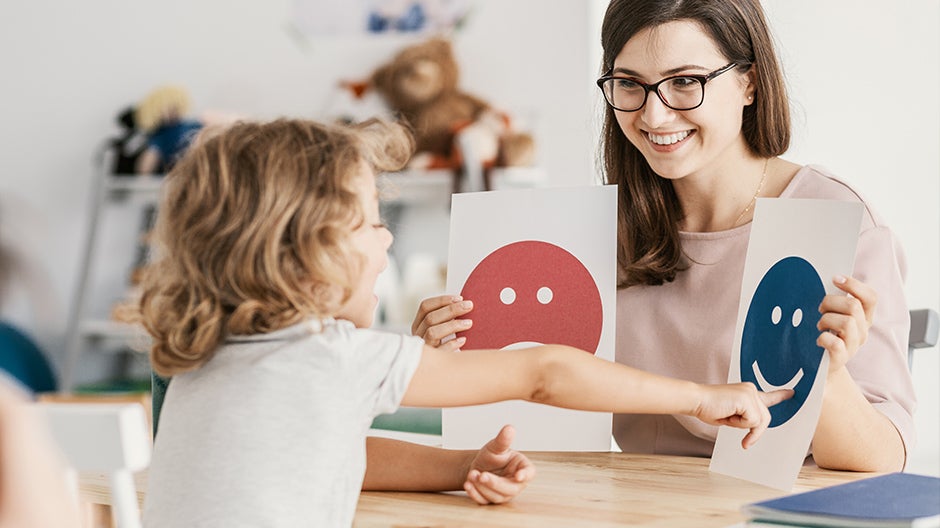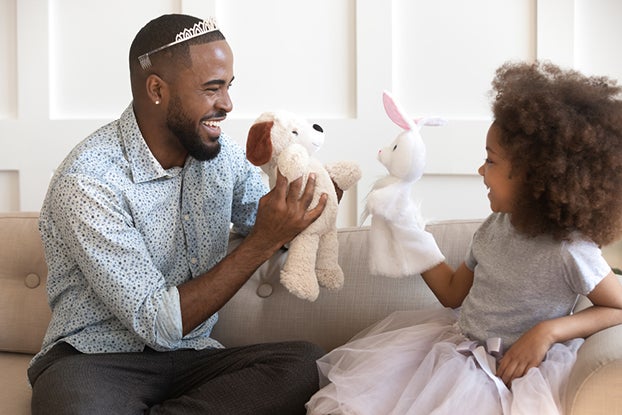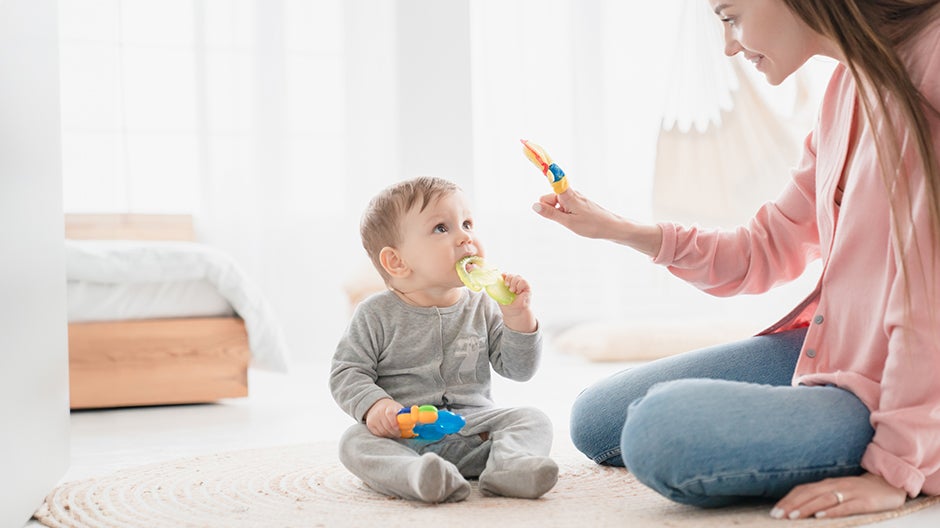Can you find the red apple? Spend time around young kids interacting with teachers (or, for that matter, using our award-winning HOMER early learning app), and you’ll hear lots of questions like these.
There’s a good reason why! Receptive language skills—the ability to interpret and respond appropriately to someone else’s language—are a major developmental milestone for kids.
Not sure what receptive language is or what you can do to encourage receptive language skills in your kids? We’ve got you covered with examples, activities, and more.
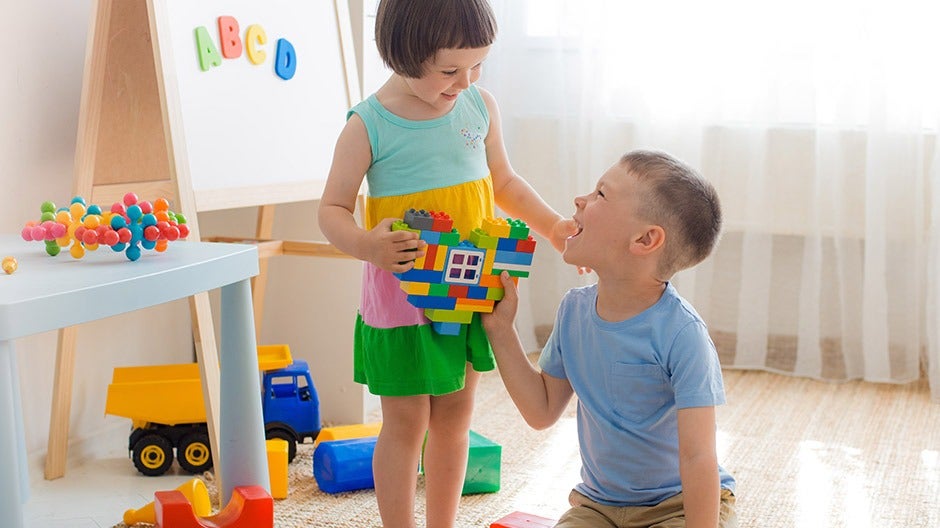
The Short Cut
- Receptive language skills help kids (and adults!) understand and respond to verbal, nonverbal, and written communication
- Kids need receptive language skills to interact with others effectively in school, with friends, and at home
- Receptive language skills emerge during a child’s first year and typically develop ahead of productive or expressive language skills
- Parents can help kids with receptive language skills through narrating everyday activities and asking questions, or through comprehensive learning memberships like Begin’s
Receptive Language Skills by Age
Kids progress through a series of milestones as their receptive language improves.

Everyone develops at their own pace, but most kids show the following skills by the following ages:
Age 1
- Calms down or gets quiet when you speak
- Responds to facial expressions
- Looks at a parent when the parent says their name
- Responds to simple directions (“Look at Mommy”)
Age 2
- Understands simple directions (“Give me the toy”)
- Responds to nonverbal communication like clapping, holding a hand up for a high-five, or making a silly face
- Understands at least 50 words
- Understands directions with multiple steps (“Get the toy and put it in the basket.”)
- Recognizes emotions in others based on their facial expressions, body language, and words
Age 3
- Can answer simple questions, like “What do you do if you’re hungry?”
- Starts to understand simple rules for simple games (like “Go Fish”)
- Can guess the meaning of some new words based on context
Age 4
- Understands basic words that describe location (like on, under, and in)
- Can better understand rules for games
- Can understand and follow multistep instructions
Age 5
- Understands more advanced location words (like between, beside, and behind)
- Can begin to follow more complex rules for games
Receptive vs. Expressive Language
If you ever studied a second language, you might remember being able to understand words before you could use them fluently.
The same goes for kids as they learn their first language! Early learning experts call the ability to use words, gestures, and expressions to communicate “expressive language.”
The key difference between receptive and expressive language lies in understanding versus communicating. Receptive language skills help kids grasp what someone else is trying to communicate. Expressive language skills help them communicate effectively with others.
Kids typically learn receptive language skills before they learn equivalent expressive language skills. Many 2-year-olds, for example, can understand the phrase “Please give me the toy,” but it may be another year or so before they start to say “Give me the toy” when they want a toy themselves.
Here are some examples:
| Receptive Language Milestones | Expressive Language Milestones |
| Responds to facial expressions | Uses facial expressions to communicate feelings (like exaggerating a frown when upset) |
| Understands a command like “Give me the toy” | Can issue a command (asking for a toy to be given to them) |
| Understands directions with multiple steps, like “Pick up the toy and put it in the toy basket” | Can give directions with multiple steps, like “Can you get my water bottle from my room and bring it to me?” |
| Starts to understand rules for simple games, like “Go Fish” | Can explain simple rules for games to friends or family |
| Understands advanced words for location, like between, beside, and behind | Correctly uses advanced words for location, like between, beside, and behind |
Expressive language and receptive language are both important skills. Kids sometimes struggle with expressive language, but it’s totally normal for it to lag behind their receptive language!
Receptive Language Activities
Receptive language gets kids ready for more advanced communication skills (like expressive language).

It’s so important, in fact, that we built many of the games in our award-winning HOMER early learning app to help kids get better at it.
Both HOMER and our comprehensive learning membership provide great ways to work on receptive language. Parents can also reinforce their kids’ learning through everyday activities and playtime ideas like these:
1. Narrate Your Day
One of the best ways to help kids learn language skills, including receptive language, is to talk a lot around them.
And one of the easiest ways to do that is to describe what you’re doing as you’re doing it, starting from infancy.
Going for a walk with a baby? Say “Here we go! I’m picking you up and putting you in the stroller now. And now I’m doing the buckles, and I’m taking off the brakes, and now you’re rolling! Whee!” Doing this helps them learn vocabulary and how tone of voice relates to meaning.
The same strategy keeps working for kids as they get older.
Eventually, they’ll start asking you what you’re doing (“What you doing, Mommy?”). When you respond (“I’m making pancakes. First I add the mix to the bowl, then I crack an egg…”), you tap into their natural curiosity and reinforce their ability to use questions in conversation.
2. Repeat and Build
Once your child begins using language, you can help their skills develop by repeating what they say and building on it.
This takes advantage of their interest in something by helping them develop a deeper understanding of it—including more complex concepts and vocabulary.
For example, if your child says “My shirt,” and points at their shirt, you can say, “Yes, that is your shirt. It’s your yellow shirt, with the dinosaur on it. What kind of dinosaur is that?”
3. Ask Questions
Asking your child questions frequently helps them understand different kinds of questions and how they should respond. (Sometimes you might also have to answer for or correct younger kids to show them what to do when asked.)
Reading is a great opportunity for this. Many kids’ books are written with it in mind (think “Brown bear, brown bear, what do you see?”).
You can also play question games in the car, on a walk, or just snuggling on the couch. Try these variations:
- “I see something yellow. What do you see that’s yellow?”
- “I hear a loud truck. What do you hear?”
- “My shirt feels soft on my body. How does your shirt feel?”
- “My coffee is hot. Is your milk hot or cold?”
Younger kids often get answers wrong (“My milk is hot!” or “The sky!” when asked to name something yellow). That’s okay!
Getting things wrong and hearing you respond (“Let me touch your cup—hmm, this milk feels cold to me!”) helps them learn.
Is My Child Struggling with Receptive Language?
Kids don’t respond to parents and caregivers all the time (some days, that feels like an understatement!).
Even when they have well-developed receptive language skills, they sometimes ignore you, misunderstand you, or forget what you asked them to do. That’s totally normal!

But other times, kids who don’t respond to language need help. Struggles with receptive language can be a sign of hearing problems, potential diagnosis along the autism spectrum, or other cognitive or learning delays.
They can also occur without a clear cause. If you’re concerned about your child’s receptive language skills, speak with their doctor about what you’re noticing.
Building Receptive Language with Begin
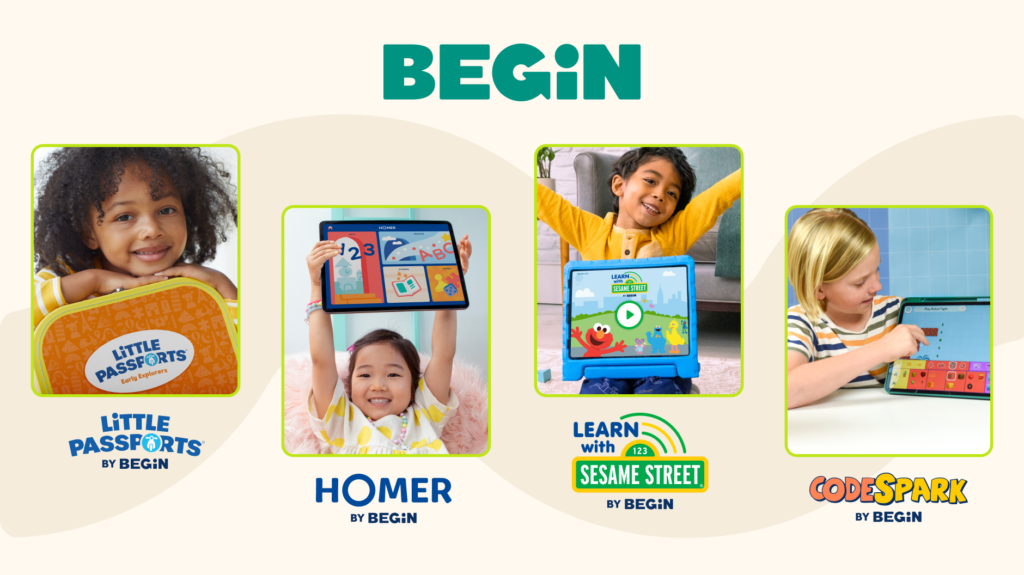
Many of Begin’s award-winning learning products contain games and activities that help with receptive language.
Whether kids are playing “Letter Hunt” in HOMER, identifying feelings in Learn with Sesame Street, or following the stories in a Little Passports kit, they’ll be answering questions, following directions, and having a ton of fun while they build essential skills for school and life!
For the most effective way to get the learning your kids need most, check out our learning membership, and give your kids their best start to achieving their fullest potential.
